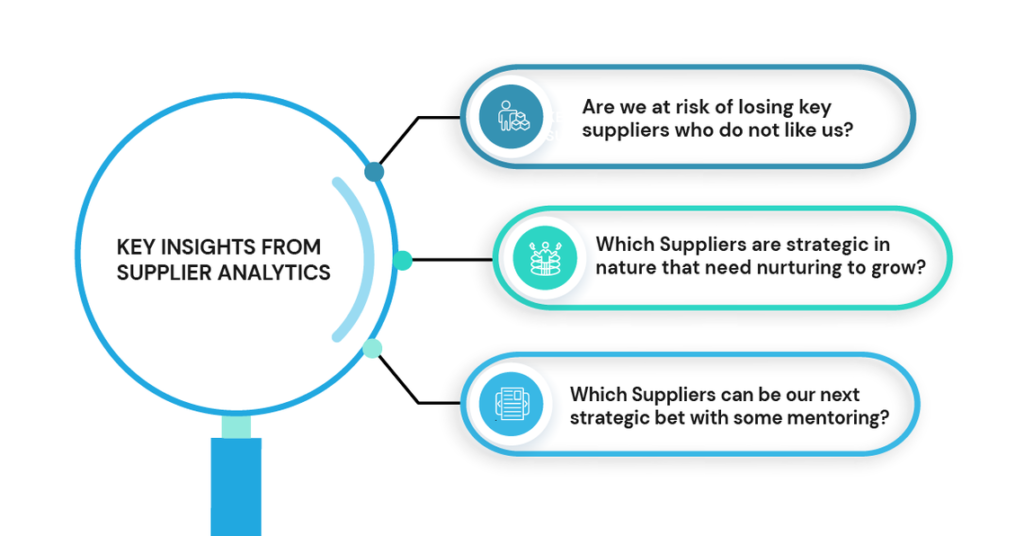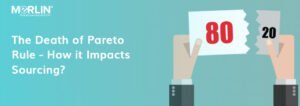It is not an understatement to call analytics one of the key pillars of Strategic Sourcing and Procurement. Strategic Sourcing Analytics covers several aspects of Strategic Sourcing such as Categories, Customers, Spend, etc. Suppliers are a key part of any enterprise’s Supply chain and Strategic Sourcing Analytics would be incomplete without comprehensive Supplier Analytics.
This guide looks at the scope of Supplier Analytics, the insights they can potentially offer and the possible actions buyers can take based on those insights.
Table of Contents
ToggleSupplier Analytics
In the context of Strategic Sourcing, effective supplier relationship management offers the following benefits:
- Mitigating risks such as financial, regional, regulatory, etc. by diversifying the source of materials and/or services
- Improving operational efficiency, by sourcing materials and/or services from the most efficient sources
- Reducing the total cost of operations and products, by driving financial efficiency through centralized production, benefit of scale etc
- Improving quality of materials and services, through focused, dedicated and advanced quality control and appraisal measures
Supplier Analytics looks at meaningful and actionable insights in one or more of the above areas, by looking at one Supplier at a time and comparing Suppliers across space and time.
Areas of Supplier Analytics
Spend by Supplier
Insights from Spend by Suppliers provide spend spread across Suppliers in different geographical regions, diversity types etc., typically within a group of related Categories. These insights can potentially answer some of the following key questions:
- Are we appropriately spread across a set of Suppliers to mitigate geopolitical or natural risks?
- How efficient is our tail spend for every group of Categories?
- Will we be able to demonstrate compliance to diversity using Spend by Supplier diversity?

Supplier Score Card
A Supplier scorecard pitches the supplier spend & performance against the performance of the buying organization as perceived by the supplier collected through surveys. These insights can potentially provide answers to some of the following key questions:
- Are we at risk of losing key Suppliers that do not perceive us good?
- Which Suppliers are strategic in nature that need nurturing and can support growth?
- Which Suppliers can be our next strategic bet with some mentoring?
Supplier Risk Analytics
A Supplier may bring in additional risks into the Supply chain, may mitigate an already present risk or maybe at the risk of interrupting the Supply chain. Identifying such risks upfront and employing appropriate sourcing strategy in supply chain management can help to mitigate them for the overall sustainability of the enterprise.
Supplier Compliance Analytics
There is a growing trend of making the Buying organizations responsible for ensuring the compliance status of their supply chain. Buying organizations are racing against time to comply with such regulations. A good starting point to optimizing such efforts would be Supplier Compliance Analytics to understand the current status of the compliance of the Supply chain and initiate efforts on risk-prone areas.
Supplier Comparison
By pitching Suppliers against each other in similar Categories, Buyers will enable you to compare attributes of the cohorts of Suppliers such as Spend, Risk, Compliance, etc. and make meaningful decisions on:
- Mentoring smaller Suppliers to make them more strategic in the Supply chain
- Reducing dependence on potentially high-risk Suppliers
- Rationalizing Suppliers within a Category to reduce operational overhead and improve efficiency
- Making appropriate changes to Share of Business (SoB) to make the Supply chain more resilient and efficient.
Source of Supplier Analytics
Most of the Supplier Analytics can be performed using the data collected and collated by enterprise systems involved in the process of Sourcing such as SRM, ERP, Procurement, PLM, etc. However, advanced supplier analytics such as Risk Analytics and Compliance Analytics will need syndicated data collected from external sources including public domain.
Conclusion:
By following manual methods for sourcing analytics is not only resource intensive but also consumes a significant amount of time. A system that can bring all business processes and associated data together to form a single source-of-truth can go a long way to accomplish the goal of Strategic Sourcing.
MeRLIN is a strategic sourcing solution designed for direct procurement and indirect procurement needs of organizations. It combines supplier relationship management, category management, sourcing, contract management, procurement, planning, and sophisticated sourcing, procurement and spend analytics into a single platform. It helps to effectively create and carry out supplier sourcing strategies utilizing data-driven insights, manage suppliers, RFx, and eAuctions, and streamline decision-making using transparent actionable analytics.
Want to know more about MeRLIN Strategic Sourcing and Sourcing Analytics Solutions? Contact us.







